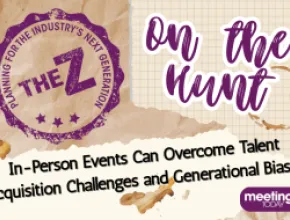The specter of active shooters carrying out mass shootings has fallen on the meetings industry after a drumbeat of such horrific incidents in 2018 and before.
Sadly, this realization that a violent attack could occur has become part of our lives, and the “new normal” is to have a heightened sense of awareness and risk management preparation in order to protect attendees at events.
Meetings Today covered the issue in a variety of articles:
- Duty of Care Simplified: A Meeting Planner's Guide
- Is Your Meeting or Event Prepared for a Crisis?
- Crisis Duty: How to Mitigate Risk at Meetings
- One Year Later: Where Does Public Safety and Security Stand in Vegas?
- What to Do If an Active Shooter Strikes During Your Meeting
- NeoCon Death Triggers Lawsuit
Meetings Today checked in with Brenda Rivers, founder and CEO of Andavo Meetings, Incentives and Consulting, a meetings risk management educator and author of The Meeting & Event Risk Management Guide for her input on the state of attendee safety at events in 2018 and beyond.
Meetings Today (MT): Why was the issue of security/risk management such a big news item in 2018?
Brenda Rivers (BR): With the rise of domestic and international terrorism, particularly at event venues such as Mandalay Bay, the hospitality industry has a heightened sense of duty of care to protect the safety of all guests. There have been no clearly defined best practices for hotels, event organizers, meeting planners, convention centers and venues to follow in order to integrate risk management strategy into their planning process.
MT: How do you think this will affect the meetings and hospitality industries moving forward?
BR: The tragic loss of lives and ensuing litigation will create a strong motivation for the industry to follow duty of care obligations, which will be imposed by the courts in addition to being the “right thing to do”:
- To adequately investigate foreseeable hazards, crises and threats.
- To inform and warn of dangers.
- To recommend pre-event mitigation planning.
- To prepare to respond with updated and rehearsed crisis and communication plans.
MT: What tips do you have for meeting planners to prepare a risk mitigation plan?
BR: Integrate a six-stage risk mitigation process in each meeting and event design that includes the following:
- Conducting a risk assessment for the event.
- Identifying all critical resources and first responders early.
- Engage and share emergency plans with each other.
- Create updated crisis response plans.
- Create crisis communication plans.
- Conduct pre-event rehearsals.
MT: What points should meeting planners make to organizational stakeholders in order to secure or budget money to prepare a security/risk management plan?
BR: Conduct a cost/benefit analysis to demonstrate the following:
The cost for integrating a risk management plan vs.
- The cost of litigation.
- Damage to reputation and brand.
- The cost of a cyber-attack.
- The loss of the event investment.
MT: What do you think the future will bring regarding this issue?
BR: The meetings and events industry has the opportunity bring all hospitality stakeholders together early in the event planning process so that it becomes a standard for planners, hotels, venues, convention centers and DMCs to talk early; to share emergency plans; and to insist on pre-event safety rehearsals and active shooter trainings. We have the power and responsibility to save lives.
Brenda Rivers, JD, is the founder and CEO of Andavo Meetings, Incentives and Consulting. With a background in hospitality law, she is certified by Institute of Crisis Management.
Rivers is also the author of The Meeting & Event Risk Management Guide, published by Meetings Today.







